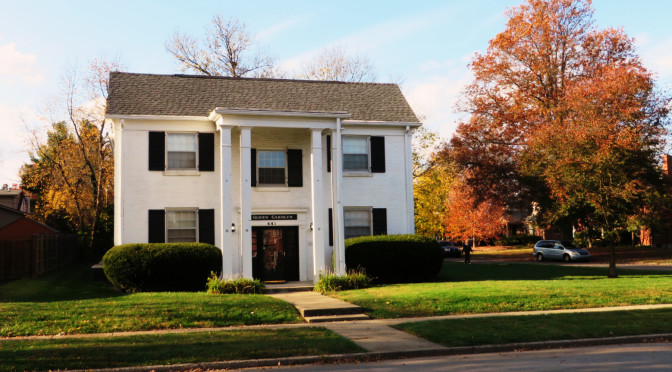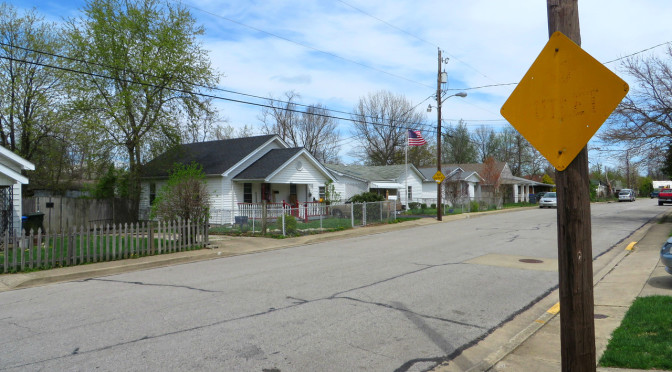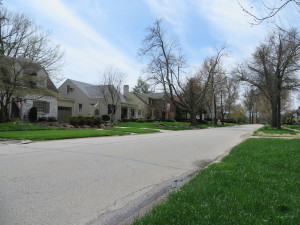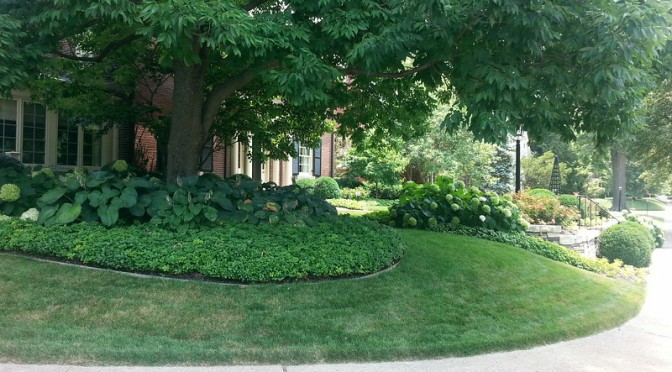Today was a great day for a walk through the Fairway neighborhood, sunny, with the smell of fallen leaves in the air, very pleasant. This was my second trip through this neighborhood, with my first pass back in July of 2014, on Day 9. This part of the neighborhood is a little different, with some duplexes and apartment buildings along Carolyn, including the pictured Queen Carolyn.
Tag Archives: Henry Clay
Day 96-Good bones but not a lot of meat
[load]
This route took me back to Kenwick, this time walking lengthwise, parallel to Richmond Road, on Menifee and Monroe Avenues. In terms of typology, there’s not a lot to add. These houses are similar to those in the same areas of my previous walk down Sherman and Bassett on Day 76. The houses on the north end of the area I passed through, on Owsley and Marne, tend to be older–1920’s era, then the late 1930’s and 1940’s houses on Sherman but are similar in other ways, rounding out the diversity in housing stock that I proposed made this neighborhood so economically diverse.I like Kenwick. It’s probably my favorite neighborhood so far. Its relatively regular street network contributes to walkability and its diversity without a lot of obvious tension is unique. Neighborhoods like Kenwick provide insights that planners and developers should take into account in planning future neighborhoods. But it has its problems which should also be addressed. Block length is one. The blocks heading northeast and southwest are long–close to a quarter mile. The northwest/southeast blocks are very short, around 350 feet long. The short blocks are dominated by the sides of houses that front the longer blocks which tends to make these blocks feel more desolate. There also aren’t many destinations that are truly within walking distance. National Avenue is close but still well over half a mile from the average home in the areas I passed by. The shops in the neighborhood are small and their location within the neighborhood rather than at the interface between neighborhoods probably limits their ability to serve as more than a convenience store. And even though there is a community center with a small park, it feels like there aren’t a lot of other public spaces. The net result is to delegate walking to recreational uses, even here.
Day 9
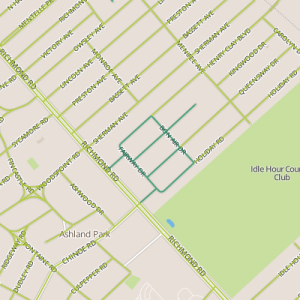 Today I strolled through the Fairway neighborhood, located next to Idle Hour Country Club and along Richmond. This is a neighborhood of homes built in the 1920’s and 30’s that tend to be on the larger side. I passed some modest homes (for example, on Henry Clay) but many of the homes in this area are grand, tall houses often with front doors located well above street level. This had some impact, as the scale felt different, more imposing than in newer middle-class neighborhoods. This neighborhood is laid out in a connected street grid, and the block length for the portion I walked is reasonable (around 750 feet; blocks to the northeast are longer), with the end result that the neighborhood felt comfortable and walkable despite the imposing homes. As you might expect in an old neighborhood, this area has some very tall trees; the wide tree lawns allow larger tree trunks than the 3 foot margins currently common.
Today I strolled through the Fairway neighborhood, located next to Idle Hour Country Club and along Richmond. This is a neighborhood of homes built in the 1920’s and 30’s that tend to be on the larger side. I passed some modest homes (for example, on Henry Clay) but many of the homes in this area are grand, tall houses often with front doors located well above street level. This had some impact, as the scale felt different, more imposing than in newer middle-class neighborhoods. This neighborhood is laid out in a connected street grid, and the block length for the portion I walked is reasonable (around 750 feet; blocks to the northeast are longer), with the end result that the neighborhood felt comfortable and walkable despite the imposing homes. As you might expect in an old neighborhood, this area has some very tall trees; the wide tree lawns allow larger tree trunks than the 3 foot margins currently common.
It was difficult not to walk in this neighborhood and not be conscious of the fact that these were homes to people who are doing well financially; perhaps not rich but certainly upper middle class. It comes out in the homes but also in the density of not just visual experience by auditory and olfactory experience. Variety not just in homes but in how yards are landscaped (thinking toward my question from my Day 8 walk, some yards have completely eliminated grass in favor of other ground cover that presumably doesn’t require nearly as much care). There were more smells, too, from a variety of plants to mundane home smells, and perhaps the canopy of trees kept smells in.
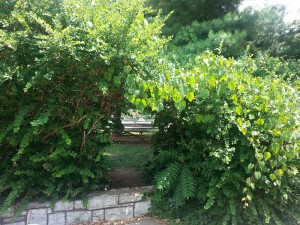
As it may have with sounds as well, since, the outdoors provided more variety of sounds, from a backyard fountain to the sounds of birds and kids playing that were clearer here than in past neighborhoods.
I think my dissatisfaction with planning largely arose from the fact that I felt it failed some of its social justice aims by making nice neighborhoods safe for gentrification while ignoring neighborhoods with significant design failures. Simple economics drives less wealthy families out of good (in the planning sense) neighborhoods into neighborhoods that provide less interest, fewer opportunities for serendipitous discovery. So what it is, exactly, about these nice, wealthy neighborhoods that make them so nice and to what extent could these things be copied, affordably (and ideally by residents ourselves) into the neighborhoods we can afford?
